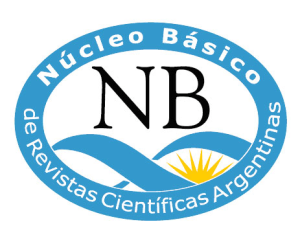Social capital of local communities in the buffer zone of a protected area in the temperate rainforest of southern Chile
Keywords:
Social capital, Governance, Conservation, Protected areas.Abstract
Social capital is an organization’s resource based on social relationships, so their properties can be key to identifying the social factors of success or failure for the conservation of nature. A study case is presented referring to the local communities in the buffer zone of two protected areas in the temperate rainforest of southern Chile. Through the development of semi-structured interviews with social leaders and the review of documentary information, social links were identified between community organizations with other social organizations at the local level or with institutions and organizations of local or regional scale with interest and / or influence in the study area. The results show that the community social capital presents high levels of internal cohesion, low linkage with other local actors and significant levels of integration with municipal/regional level actors, even though the volume and the quality of social capital are low. This research suggests difficulties to develop collaborative actions, in addition to significant levels of dependency, which is not favourable for a governance system based on principles of adaptive co-management.
Downloads
References
Adger, W. Neil, K. Brown, and Emma Tompkins. "The Political Economy of Cross-Scale Networks in Resourse Co-Management." Ecology and Society 10.2 (2006): 9.
Amtmann, Carlos, and Gustavo Blanco. "Efectos de la Salmonicultura en las Economías Campesinas de la Región de Los Lagos, Chile." Revista Austral de Ciencias Sociales.5 (2001): 93-106.
Armitage, Derek R., et al. "Adaptive Co-Management for Social-Ecological Complexity." Frontiers in Ecology and the Environment 7.2 (2009): 95-102.
Barnes-Mauthe, Michele, et al. "What Determines Social Capital in a Social–Ecological System? Insights from a Network Perspective." Environmental Management 55.2 (2015): 392-410.
Berkes, Fikret. "Evolution of Co-Management: Role of Knowledge Generation, Bridging Organizations and Social Learning." Journal of Environmental Management 90.5 (2009): 1692-702.
Bodin, Örjan, and Beatrice I. Crona. "The Role of Social Networks in Natural Resource Governance: What Relational Patterns Make a Difference?" Global Environmental Change 19.3 (2009): 366-74.
Bodin, Örjan, and Christina Prell. Social Networks and Natural Resource Management : Uncovering the Social Fabric of Environmental Governance. 2011.
CONAF. "Plan de Manejo Reserva Nacional Llanquihue." Santiago. 2014.
De Lopez, Thanakvaro Thyl. "Stakeholder Management for Conservation Projects: A Case Study of Ream National Park, Cambodia1." Environmental Management 28.1 (2001): 47-60.
Fernández, J. "El Capital Social. Potencial para la Investigación-Acción de un Paradigma Emergente." Cuadernos de Trabajo Social 25.2 (2012).
Garcia-Amado, Luis Rico, et al. "Building Ties: Social Capital Network Analysis of a Forest Community in a Biosphere Reserve in Chiapas, Mexico." Ecology and Society 17.3 (2012).
García, Joaquín, y Ana Aparicio. "El Capital Social en el Parque Nacional Cabañeros." Boletín de la Asociación de Geógrafos Españoles.63 (2013): 399-421.
Grimble, Robin, and Kate Wellard. "Stakeholder Methodologies in Natural Resource Management: A Review of Principles, Contexts, Experiences and Opportunities." Agricultural Systems 55.2 (1997): 173-93.
Guerrero, Angela M., et al. "Scale Mismatches, Conservation Planning, and the Value of Social-Network Analyses." Conservation Biology 27.1 (2013): 35-44.
Guerrero, Angela M., Ryan RJ Mcallister, and Kerrie A. Wilson. "Achieving cross‐scale collaboration for large scale conservation initiatives." Conservation Letters 8.2 (2015): 107-117.
Hauberer, Julia. Social Capital Theory. Towards a Methodological Foundation. Germany: Springer Fachmedien, 2011.
Jones, N., et al. "Local Social Capital and the Acceptance of Protected Area Policies: An Empirical Study of Two Ramsar River Delta Ecosystems in Northern Greece." Journal of Environmental Management 96.1 (2012): 55-63.
Lienert, Judit, Florian Schnetzer, and Karin Ingold. "Stakeholder Analysis Combined with Social Network Analysis Provides Fine-Grained Insights into Water Infrastructure Planning Processes." Journal of Environmental Management 125.0 (2013): 134-48.
Lozares, Carlos, et al. "Cohesión, Vinculación e Integración sociales en el marco del Capital Social." Redes. Revista hispana para el análisis de redes sociales 20.1 (2011): 1-28.
Mandarano, Lynn A. "Social Network Analysis of Social Capital in Collaborative Planning." Society & Natural Resources 22.3 (2009): 245-60.
Marín, Andrés, et al. "Exploring Social Capital in Chile’s Coastal Benthic Comanagement System Using a Network Approach." Ecology and Society 17.1 (2012).
Mills, Morena, et al. "Linking Regional Planning and Local Action: Towards Using Social Network Analysis in Systematic Conservation Planning." Biological Conservation 169.0 (2014): 6-13.
Molina, Ignacio. "Sistematización Experiencia. Zona de Amortiguación de las Áreas Protegidas Parque Nacional Alerce Andino y Reserva Nacional Llanquihue." Puerto Montt, Chile: Ministerio de Medio Ambiente, 2013. 41.
Newig, Jens, Dirk Günther, and Claudia Pahl-Wostl. "Synapses in the Network: Learning in Governance Networks in the Context of Environmental Management." Ecology and Society 15.4 (2010).
PNUD-CONAMA-GEF. "Estudio de Caracterización Territorial de la Zona de Amortiguación de las Áreas Silvestres Protegidas Parque Nacional Alerce Andino y Reserva Nacional Llanquihue (Consultores: Aurtenechea, M.; Kosiel, K.)." Puerto Montt, Chile: Ministerio de Medio Ambiente, 2009.
Prell, Christina. Social network analysis: History, theory and methodology. Sage, 2012.
Rathwell, Kaitlyn J., and Garry D. Peterson. "Connecting Social Networks with Ecosystem Services for Watershed Governance: A Social-Ecological Network Perspective Highlights the Critical Role of Bridging Organizations." Ecology and Society 17.2 (2012).
Reed, M. S., and R. Curzon. "Stakeholder Mapping for the Governance of Biosecurity: A Literature Review." Journal of Integrative Environmental Sciences 12.1 (2015): 15-38.
Sabatini, Fabio. "Social Capital as Social Networks: A New Framework for Measurement and an Empirical Analysis of Its Determinants and Consequences." The Journal of Socio-Economics 38.3 (2009): 429-42.
Sandström, Annica, Beatrice Crona, and Örjan Bodin. "Legitimacy in Co-Management: The Impact of Preexisting Structures, Social Networks and Governance Strategies." Environmental Policy and Governance 24.1 (2014): 60-76.
Scott, John, y Peter J. Carrington, eds. Social Network Analisys. London: SAGE, 2011.
Vance-Borland, Ken, and June Holley. "Conservation Stakeholder Network Mapping, Analysis, and Weaving." Conservation Letters 4.4 (2011): 278-88.
Woolcock, Michael. "The Rise and Routinization of Social Capital, 1988–2008." Annual Review of Political Science 13.1 (2010): 469-87.
Downloads
Published
How to Cite
Issue
Section
License
Nota del Copyright
Los trabajos presentados en Revista Pilquen, Sección Ciencias Sociales deben ser originales e inéditos y no estar postulados simultáneamente en otras revistas. El envío de todo tipo de colaboración implica la aceptación de las normas editoriales de la revista y la autorización al Comité Editorial para que difunda los trabajos tanto en la revista como en las bases de datos o sistemas de indización en donde se alojan los contenidos de Pilquen.
Las y los autores que publican en esta revista están de acuerdo con los siguientes términos:
1) Las autoras y los autores conservan los derechos de autor y garantizan a la revista el derecho de ser la primera publicación del trabajo al igual que licenciado bajo una Creative Commons "Atribución -No Comercial CC BY-NC-SA”, mediante la cual ser permite copiar, reproducir, distribuir, comunicar públicamente la obra y generar obras derivadas, siempre y cuando se cite y reconozca al autor original. No se permite, sin embargo, utilizar la obra ni sus posibles obras derivadas con fines comerciales.
2) Las y los autores pueden establecer por separado acuerdos adicionales para la distribución no exclusiva de la versión de la obra publicada en la revista (por ejemplo, situarlo en un repositorio institucional o publicarlo en un libro), con un reconocimiento de su publicación inicial en esta revista.
3) Las y los autores no recibirán compensación monetaria de Pilquen por el uso del material contenido en el artículo; así como tampoco asumirán ningún costo de publicación de los mismos.












